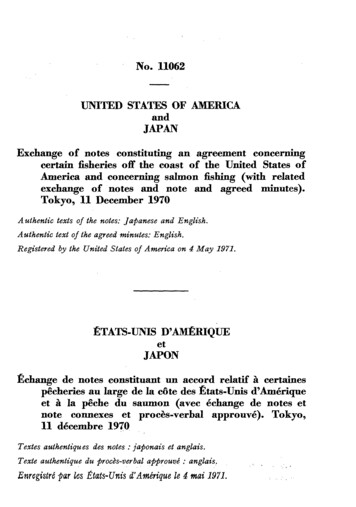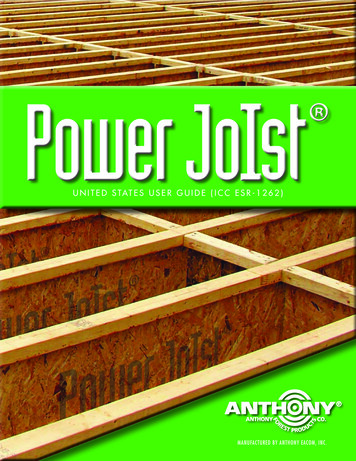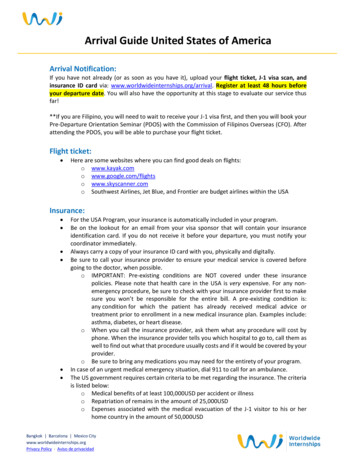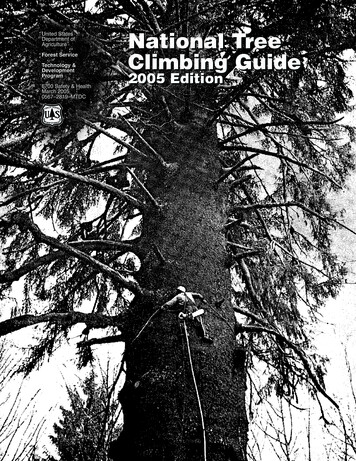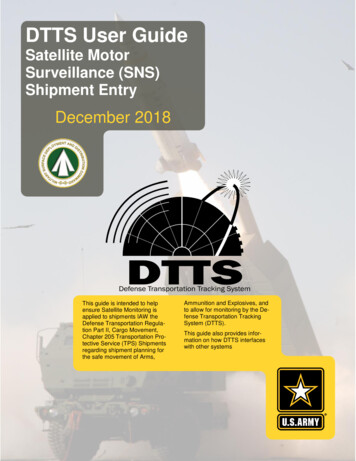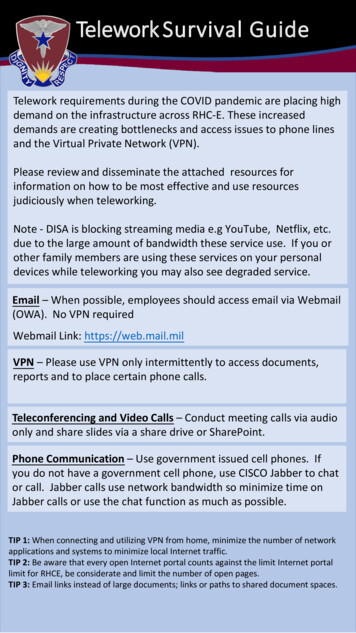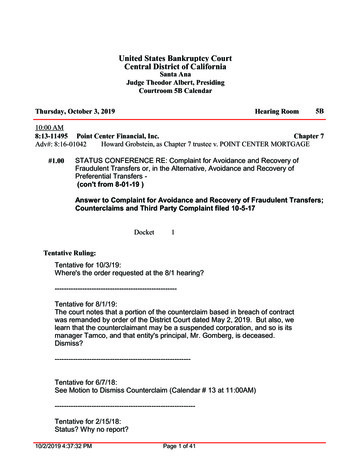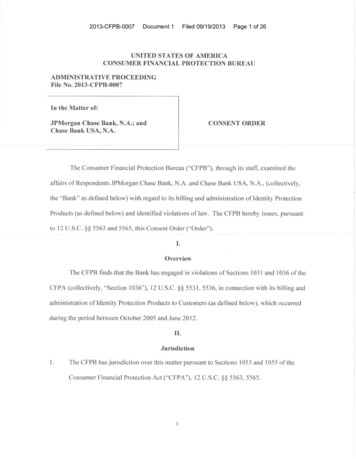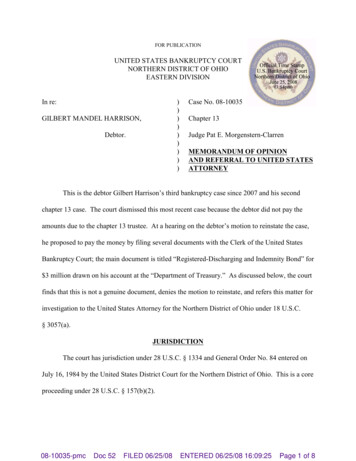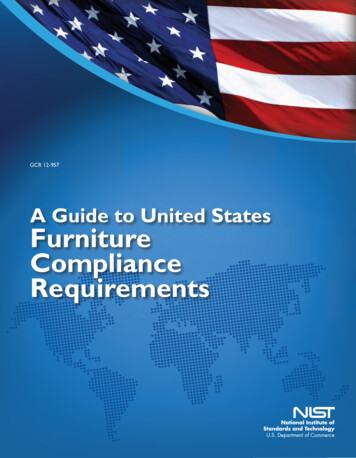
Transcription
GCR 12-957A Guide to United StatesFurnitureComplianceRequirements
GCR 12-957A Guide to United StatesFurniture Compliance Requirements
GCR 12-957A Guide to United StatesFurniture Compliance RequirementsPrepared forStandards Coordination Office, National Institute of Standards and TechnologyThis publication was produced as part of contract SB134111BR0002 with the National Institute of Standards andTechnology. The contents of this publication do not necessarily reflect the views or policies of the National Instituteof Standards and Technology or the U.S. Government.February 2012/Revised September 2012U.S. Department of CommerceRebecca Blank, Acting Secretary and Deputy Secretary ofCommerceNational Institute of Standards and TechnologyPatrick D. Gallagher, Director
AcknowledgementsThe lead author for this document is Karen Reczek, Reczek & Associates, under contract to theStandards Coordination Office of NIST. Additional guidance, initial research, and review of thedocument was provided by the staff of the Standards Coordination Office of NIST including:Aubrey Covey, Patricia Harris, MaryAnn Hogan, Ileana Martinez, Anne Meininger, Erik Puskar,and Brenda Umberger. Invaluable support was also received from the knowledgeable expertsof the Consumer Product Safety Commission who provided input into the document and alsoconducted a thorough review. These individuals are: Patricia Edwards, Arlene Flecha-Castro,Roberta Telles, and Mary Toro.
Table of ContentsHOW TO USE THIS GUIDE . 3SCOPE . 3OVERVIEW OF U.S. FEDERAL REGULATORY FRAMEWORK. 3FEDERAL REGULATORY AUTHORITIES AND TECHNICAL REGULATIONS (MANDATORY). 3Consumer Product Safety Commission (CPSC) . 4Consumer Products Safety Act (CPSA) . 4Flammable Fabrics Act (FFA) . 4Consumer Product Safety Improvement Act of 2008 (CPSIA). 4Bunk Beds, Full-Size Cribs, Non-Full-Size Cribs and Toddler Beds. 5Cribs . 6Toddler Beds . 6Federal Hazardous Substances Act (FHSA) . 6Environmental Protection Agency (EPA) . 7Antimicrobial Textiles: The Federal Insecticide, Fungicide, and Rodenticide Act (FIFRA) . 7Toxic Substance Control Act (TCSA) . 7Wood in Furniture: Formaldehyde in High Density Fiberboard (HDFB) . 8Customs and Border Protection (CBP) . 8Marking Of Imported Articles and Containers . 8Federal Trade Commission (FTC) . 9Federal Trade Commission Act (FTC Act) . 9Used or Secondhand Stuffing: Textile Fiber Identification Act . 9Environmental Claims . 9United States Department of Agriculture (USDA) . 10The Lacey Act . 10OVERVIEW OF U.S. STATE REGULATORY FRAMEWORKS . 10STATE REGULATORY AUTHORITIES AND TECHNICAL REGULATIONS (MANDATORY) . 11Packaging and Labeling. 11Toxics in Packaging Legislation . 11Page 1
Uniform Law Label . 12State of California . 13California Air Resources Board (CARB) - Formaldehyde Emissions. 13Lead and Other Toxic Substances. 14Upholstered Furniture - Flammability Requirements . 15State of Illinois . 15Lead. 15Other States. 16Flame Retardant Regulations . 16OVERVIEW OF THE U.S. VOLUNTARY STANDARDS FRAMEWORK . 16STANDARDS DEVELOPING ORGANIZATIONS (SDOS) . 16ASTM International . 16Business and Industrial Furniture Manufacturing Association (BIFMA International) . 18ANSI/BIFMA e3-2010 Furniture Sustainability Standard. 18National Fire Protection Association (NFPA) . 19TESTING AND CERTIFICATION BODIES . 19Testing . 19Certification . 20California Air Resources Board (CARB) Third-Party Certification Program . 20BIFMA Sustainability Certification Level . 20Juvenile Products Manufacturers Association (JPMA) . 20RELEVANT U.S. GOVERNMENT AGENCIES . 21U.S. FURNITURE INDUSTRY AND MARKET DATA . 22Trade Associations . 22Furniture Market Data . 22Page 2
A Guide to United StatesFurniture Compliance RequirementsHOW TO USE THIS GUIDE Regulations are mandatoryStandards are voluntary (unless “Incorporated by Reference” in a regulation)Guidelines may be voluntary (but are often de facto industry standards)“Red” text highlights mandatory requirements“Blue” text indicates a hyperlink to a website, page or document on the webSCOPEThis guide addresses children’s furniture, upholstered furniture and other types of furniture.This document does NOT address mattresses or other home furnishings such as carpets andrugs.OVERVIEW OF U.S. FEDERAL REGULATORY FRAMEWORKOnce a law has been enacted by Congress, the appropriate federal agency (e.g., the ConsumerProduct Safety Commission, the Federal Trade Commission, the National Highway Traffic andSafety Administration, et al.) may create the regulations to implement the law. Before suchregulations can be adopted, the appropriate federal agency ordinarily will issue a notice ofproposed rulemaking (NOPR) to solicit public comments on the proposed rules. To provideopportunity for public comment, the appropriate federal agency must issue draft regulations or“Proposed Rules” that are published in the Federal Register and as a WTO TBT notification. Theagency reviews the comments and can then issue a “Final Rule” that also is published in theFederal Register, and later, published annually in the Code of Federal Regulations (CFR).Together, the enabling acts/laws [published in the United States Code (USC) once passed] andthe final regulations (published in the Code of Federal Regulations) provide a framework for theimplementation and enforcement of most federal laws in the United States.FEDERAL REGULATORY AUTHORITIES AND TECHNICAL REGULATIONS (MANDATORY)Several U.S. federal agencies administer regulations associated with furniture. Specificrequirements exist at the federal level for children’s furniture. Several states have regulationsrelative to upholstered furniture.Page 3
AgencyCustoms and Border Protection (CBP)Consumer Product Safety Commission (CPSC)Environmental Protection Agency (EPA)Federal Trade Commission (FTC)United States Department of Agriculture(USDA)ScopeCountry of origin for most imported productsFlammability of upholstered furniture(proposed); lead containing surface coatings;children’s furnitureFormaldehyde in woodLabelingOrganic fibersConsumer Product Safety Commission (CPSC)Consumer Product Safety Act (CPSA)Title 15, United States Code, Chapter 47, Sections 2059-2089The Consumer Product Safety Act, entered into law on October 27, 1972, was enacted to establishthe Consumer Product Safety Commission and define its authority with the purpose ofprotecting the public against unreasonable risks of injury associated with consumer products;assisting consumers in evaluating the comparative safety of consumer products, developinguniform safety standards for consumer products; and to promote research and investigationinto the causes and prevention of product-related deaths, illnesses, and injuries.Upholstered Furniture: Pending Regulation of NoteFlammable Fabrics Act (FFA)Title 15, United States Code, Chapter 25, Sections 1191-120416 CFR 1634, Standard for the Flammability of Residential Upholstered FurnitureACTION: Notice of proposed rulemakingThe CPSC has proposed flammability standards for residential upholstered furniture under theFlammable Fabrics Act (FFA). The proposal would establish performance requirements andcertification and labeling requirements for upholstered furniture. Manufacturers of upholsteredfurniture would choose one of two possible methods of compliance: (1) using cover materialsthat are sufficiently smolder-resistant to meet a cigarette ignition performance test; or (2)placement of fire barriers that meet smoldering-and open flame-resistance tests between thecover fabric and interior filling materials. Manufacturers of upholstered furniture would berequired to certify compliance with the standard and to comply with recordkeepingrequirements as specified in the proposal.Consumer Product Safety Improvement Act of 2008 (CPSIA)Public Law 110–314, August 14, 2008On August 12, 2011, President Obama signed into law amendments to the Consumer ProductSafety Improvement Act of 2008 (CPSIA) designed to address longstanding complaints aboutsome aspects of the CPSIA.Page 4
Public Law 112–28, August 14, 2011, An Act to provide the Consumer Product SafetyCommission with greater authority and discretion in enforcing the consumer productsafety laws, and for other purposes.Children’s Furniture ItemsThe Consumer Product Safety Commission (CPSC) regulates lead in consumer goods, especiallychildren’s products. The Consumer Product Safety Improvement Act of 2008 (CPSIA) establishesnew lead content limits for children’s products (for most children’s products the limit is 100ppm) and a lower lead limit for paint and surface coatings on furniture and children’s products.16 CFR 1303, Lead in Paint on Certain Furniture Articles (Children’s Furniture)The Consumer Product Safety Commission declares that paint and similar surface-coatingmaterials for consumer use that contain lead or lead compounds and in which the lead content(calculated as lead metal) is in excess of 0.009 percent (90 ppm) of the weight of the totalnonvolatile content of the paint or the weight of the dried paint film (such paint and similarsurface-coating materials are referred to hereafter as “lead-containing paint”) are bannedhazardous products under Sections 8 and 9 of the Consumer Product Safety Act (CPSA), 15 USC2057 and 2058. (Note also Section 101(f) of the Consumer Product Safety Improvement Act of2008 (CPSIA), Public Law 110-314; and children’s furniture articles for consumer use that bear“lead-containing paint” are declared to be banned hazardous products under Section 2(g) ofthe Federal Hazardous Substances Act (FHSA)).Bunk Beds, Full-Size Cribs, Non-Full-Size Cribs and Toddler BedsThe CPSC has set standards for bunk beds, full-size cribs, and non-full-size cribs. Thesestandards were recently revised.16 CFR Parts 1213 and 1513, Safety Standards for Entrapment Hazards in Bunk BedsBeginning June 19, 2000, it is a prohibited act to manufacture for sale, offer for sale, distributein commerce, or import into the United States a bunk bed subject to the standard that doesnot meet the standard’s requirements. See 15 USC Section 2068. CPSC can seek a civil penaltyfor each prohibited act, not to exceed 10,000 for each violation up to a maximum of 15million for a related series of violations.In addition to the CPSC’s regulation, there is a voluntary standard, ASTM F 1427, that addressesadditional hazards, for example, foundation and guardrail structural integrity. For hazards otherthan entrapment that are addressed in the ASTM standard, CPSC staff will consider the ASTMstandard when investigating whether a bunk bed presents a substantial risk of injury to childrenthat may require some type of corrective action under the statutes administered by theCommission. Bunk beds are also subject to tracking label requirements, certificationrequirements, and lead content requirements.For more detailed information, see CPSC’s:Bunk Bed Regulatory Summary and Bunk Bed Test ManualPage 5
CribsThe CPSC issued new regulations for full-size and non-full-size baby cribs and third-partytesting. The crib rules were effective on June 28, 2011 for manufacturers, importers, andretailers.16 CFR 1219, Safety Standard for Full-Size Baby Cribs (Eff. June 28, 2011)16 CFR 1220, Safety Standard for Non-Full-Size Baby Cribs (Eff. June 28, 2011)Toddler BedsThe CPSC issued new regulations for toddler beds and requirements for third-party testing. Thetoddler bed rules were effective on October 20, 2011.Federal Register, Volume 76, Number 76 (Wednesday, April 20, 2011), Pages 22019-2203016 CFR 1217, Safety Standard for Toddler BedsACTION: Final ruleThe Consumer Product Safety Improvement Act of 2008 (CPSIA) requires the UnitedStates Consumer Product Safety Commission (Commission, CPSC) to promulgateconsumer product safety standards for durable infant or toddler products. Thesestandards are to be substantially the same as applicable voluntary standards or morestringent than the voluntary standard if the Commission concludes that more stringentrequirements would further reduce the risk of injury associated with the product. TheCommission is issuing a safety standard for toddler beds in response to the CPSIA. Thesafety standard addresses entrapment in bed end structures, entrapment between theguardrail and side rail, entrapment in the mattress support system, and componentfailures of the bed support system and guardrails. The standard also addresses cornerpost extensions that can catch items worn by a child and increase the risk ofstrangulation.For more detailed information, see CPSC’s:Detention of Products at Import (updated June 30, 2010) and Certificate of ConformityFederal Hazardous Substances Act (FHSA)Title 15, United States Code, Chapter 30, Sections 1261-127816 CFR 1500, Federal Hazardous Substances Act (FHSA) RegulationsFHSA regulations set forth requirements for hazardous household substances. The FHSArequires household substances that meet the definition of hazardous (as defined in the Act) tobear cautionary labeling to warn the consumer of the hazard(s) associated with the use of theproduct, that would enable the consumer to safely use and store the product, first aidinstructions where applicable, and the statement “Keep out of the reach ofchildren.” Whether a product must be labeled depends on its formulation and the likelihoodthat consumers will be exposed to any hazards it presents in customary use which includesingestion by children. The FHSA also defines as banned hazardous substances those productsthat are intended for use by children that present an electrical, mechanical, or thermal hazard,with some exceptions. The Act also allows the Consumer Product Safety Commission to banPage 6
certain products that are so dangerous or the nature of the hazard is such that the labeling actrequirements are not adequate to protect consumers.For more detailed information, see CPSC’s:Regulatory Summary for Requirements under the Federal Hazardous Substances Act:Labeling and Banning Requirements for Chemicals and Other Hazardous SubstancesEnvironmental Protection Agency (EPA)Many laws and regulations govern import and export requirements of materials which maypose a risk to human health and the environment. EPA works with the states, other federalagencies, and foreign governments to ensure compliance with laws governing the import andexport of many of these materials.Antimicrobial Textiles: The Federal Insecticide, Fungicide, and Rodenticide Act (FIFRA)Title 7, United States Code, Chapter 6, Section 121-134This Act provides for federal regulation of the distribution, sale, and use of pesticides to protecthuman health and the environment. Products that kill or repel bacteria or germs are consideredpesticides, and must be registered with the EPA prior to distribution or sale. The EPA will notregister a pesticide until it has been tested to show that it will not pose an unreasonable riskwhen used according to the directions. This includes pesticides used on textiles to provideantimicrobial or other pesticidal characteristics.FIFRA does not allow companies to make public health pesticidal claims for any productdistributed or sold unless the product has been approved and registered by EPA or is coveredby an exemption from registration. The EPA will take action against companies that make suchclaims.For more detailed information see EPA’s:Federal Insecticide, Fungicide, and Rodenticide Act (FIFRA)Consumer Products Treated with PesticidesNotice to Manufacturers, Formulators, Producers and Registrants of Pesticide Products
GCR 12-957 A Guide to United States Furniture Compliance Requirements . Prepared for . Standards Coordinati
